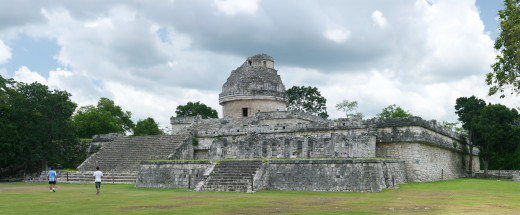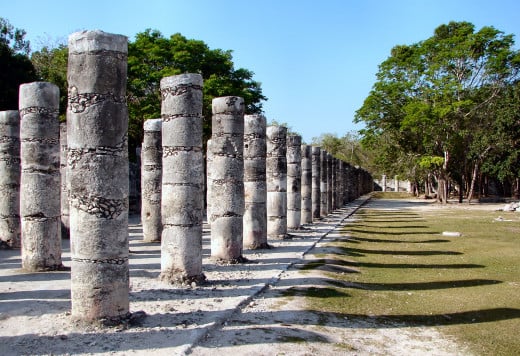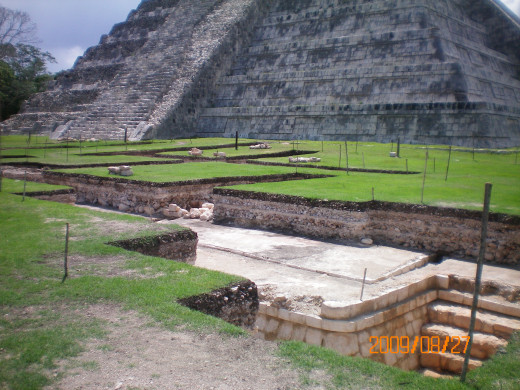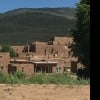- HubPages»
- Education and Science»
- History & Archaeology»
- History of the Americas
Chichen Itsa -- the great Maya civilization in the Yucatan Peninsula
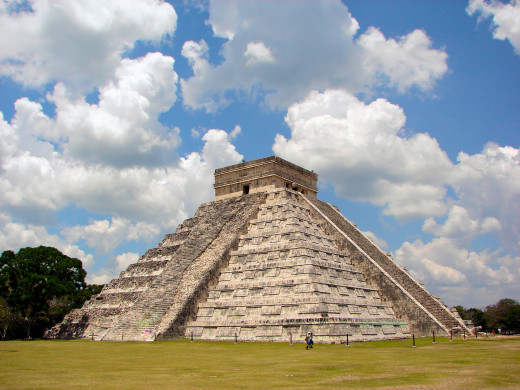
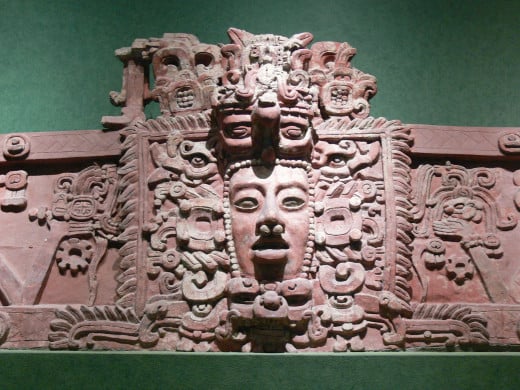
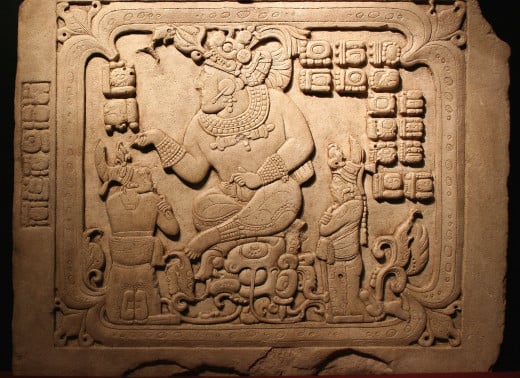

Maya Civilization
One of the most advanced civilizations in the western hemisphere was the great ancient Maya civilization that was located in southern Mexico and northern Central America. It comprised the areas today known as Guatemala, the Yucatan Peninsula, Belize, El Salvador and western Honduras as well as the Mexican states of Yucatan, Campeche, Quintana Roo, Tabasco, and Chiapas. This great civilization ran from 250-1500 AD, and Maya cities reached their highest state of development during the Classic Period (250-900 AD) and continued to flourish in the northern Yucatan Peninsula until the arrival of the Spanish in the 16th century.
Here a great native American people flourished in city-states and developed a social class system which was well-ordered and carried on trade throughout a network of cities that went as far south as Panama and as far north as central Mexico. These Maya people were mathematicians and their number system included the concept of zero - an idea unknown to the great Greek civilization.
The Maya used their mathematical knowledge along with celestial observations to refine and improved a calendar originally created by the Olmec. They created monuments to observe and commemorate movements of the moon, sun and Venus. They made paper from tree bark and wrote in books made from this paper, known as codices, four of which are known to have survived to today.
This Maya civilization was so advanced they created their own writing system, epigraphy, and the calendar which did not originate with the Maya; however, their civilization fully developed it. They are believed to have had the first writing system, hieroglyphics, in the Americas.
The Maya believed in a cyclical nature of time. Their religious rituals and ceremonies are closely associated with celestial and terrestrial cycles which they observed and inscribed as separate calendars. The job of the Maya priest was to interpret these cycles and to predict the future. He also had to determine if the heavens were positioned correctly for performing certain religious ceremonies.
The Maya religious tradition is still not understood completely by scholars. They do know that the Mayas believed the cosmos had three major planes: the Earth; the underworld beneath; and the heavens above.
They practiced human sacrifice to their polytheistic gods and during sacrifice would cut out the heart of a human being to offer to the gods. Historians have found these sacrifices depicted in the Maya codices that have survived. Their central religious god was the maize god and the life cycles of maize was at the heart of the Maya religious belief.
Today, the Maya still thrive and flourish in southern Mexico and northern Central America. They share a cultural and linguistic heritage and have integrated into a majority of mestizo cultures here. Approximately seven million Maya are living in this area today and they speak a native language called Yucatec Maya with Spanish spoken as a second or a first language.
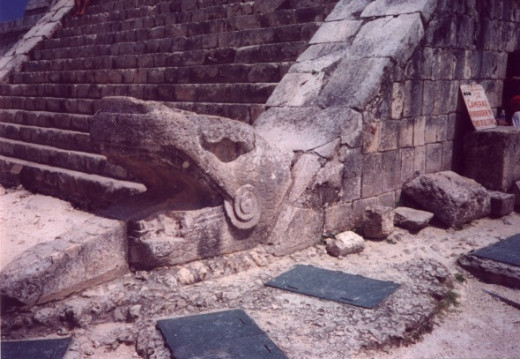
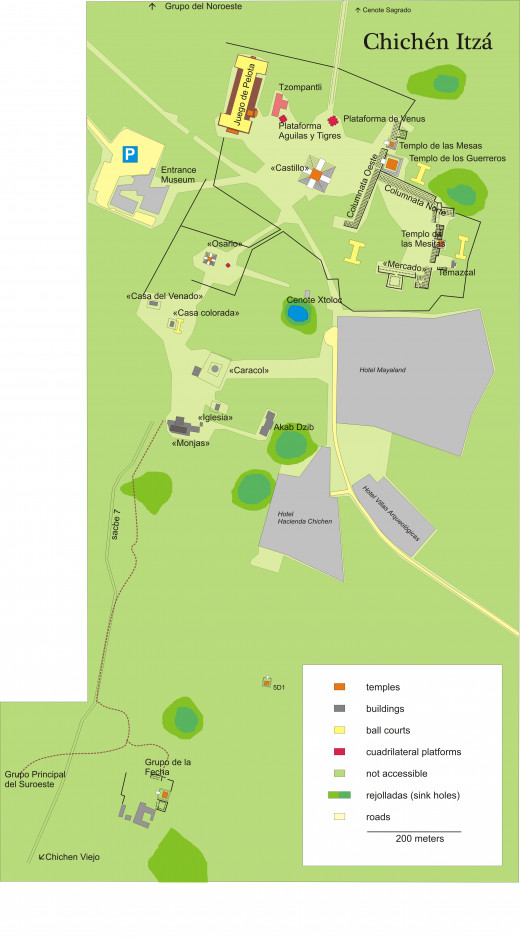
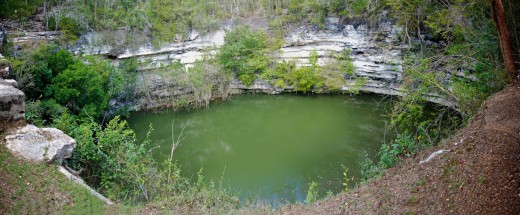
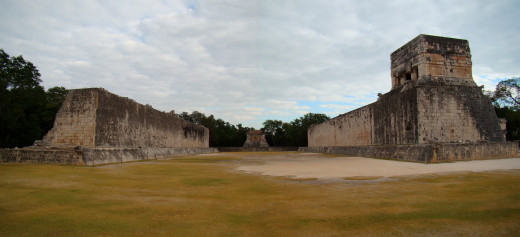
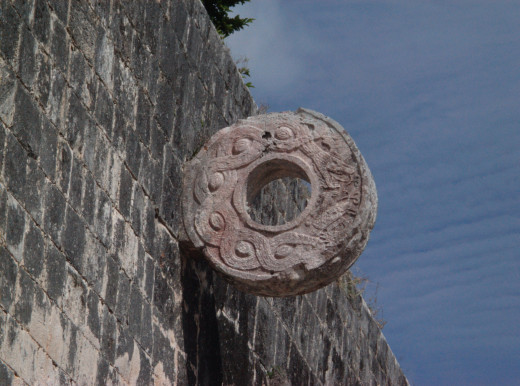
What to see at Chichen Itza
- El Castillo (The Castle)
- The Great Ball Court
- Tzompanti
- Cenote Sagrado
- Temple of the Warriors
- Temple of the Table
- Thousand Columns
- El Mercado (The Market)
- El Carocol (The Observatory)
Chichen Itza
Chichen Itza was a pre-Columbian city built by the Maya civilization during the Post-Classic Period from the 10th-16th century during the time when the Maya civilization flourished. It was developed and located in the northern Yucatan Peninsula in Mexico. Today the archaeological site is located in the municipality of Tinum in the Mexican state of Yucatan, between Valladoid and Merida.
The name, Chichen Itza, comes from from the Yucatec Maya language and it means 'at the mouth of the well of the Itza.' This is because the Yucatan Peninsula was an arid climate and the rivers in the interior run underground into two large cenotes - two large natural sink holes that provided water year round for the Maya citizens. The Cenote Sagrado is the most famous of the two wells. The pre-Columbian Maya made human sacrifices to the cenote as a form of worship to the Maya rain god, Chaac. From ancient Maya times to today, this cenote has been a destination of pilgrimage for the Maya people.
The great dominating edifice at Chichen Itza is the Temple of Kukulkan, a Maya feathered serpent deity, better known as El Castillo. (The Castle) This is one of their religious buildings and is a step pyramid that stands thirty metres (98 ft.) high and has a series of nine square terraces. Four faces of the pyramid have protruding stairways that rise at an angle of forty-five degrees. At the base of the stairways of the northeastern staircase on each side are carved heads of a serpent.
On the spring and autumn equinoxes, in the late afternoon, the northwest corner of the pyramid casts a series of triangular shadows against the west balustrade on the northern side and gives the appearance of a serpent wiggling down the staircase. The ancient Maya were known for their great celestial knowledge and understood the concept of the cyclical nature and time.
The large platform at the top of the pyramid was used for human sacrifices to the gods the ancient Maya people worshiped, and to be chosen as a human sacrifice was a great honor. Those chosen by the Maya priests for sacrifice were usually young virgin girls of noble birth.
Not all the buildings on the Great North Platform are pyramids and temples. The ancient Maya people also built the Great Ball Court which was their version of a sports stadium built for playing the Mesoamerican ballgame, a form of basketball, at Chichen Itza. It is the largest and best preserved ball court in ancient Mesoamerica. The side walls are very high and set up in the center of each of these walls are stone rings carved with intertwined feathered serpents.
The game is played with a hard rubber ball that is painstakingly made from raw rubber from the rubber trees in the rain forests that surrounded Chichen Itza. The players were not permitted to touch the ball with their hands or feet. They moved and bounced the ball off their hips to put it through the stone rings. Each time a team bounced the ball through the stone ring they scored points. Sometimes these games were played just for recreation and fun, but at times, the games were used to determine who would be the human sacrifice at the top of El Castillo. Usually, the player chosen for the sacrifice came from the winning team and again it was considered an honor to be chosen.
Also included at the archaeological site is the Temple of Warriors, a large steeped pyramid with rows of carved columns depicting warriors of the Maya people. Also, included is the Group of a Thousand Columns and an altar with the rain god, Chaac Moal.
El Mercado (The Market) is a large gallery and patio believed to have been more ceremonial than commercial.
Because the Maya people were such knowledgeable astrologists, El Caracol (The Snail), is believed by archaeologists to have been an observatory to view the stars and planets in the heavens. It is a round building on a large square platform. The round observatory is unusual in Maya architecture as they usually built their structures in rectangular and pyramid shapes. The name. El Caracol, comes from the stone spiral staircase inside. It is believed to have been a proto -observatory because the doors and windows are aligned to astronomical events, specifically around the path of Venus in the sky.
The ancient Maya civilization city of Chichen Itza is a marvel of construction and knowledge and attests to the great intelligence of the pre-Columbian Maya civilization. By the time the Spanish conquistadors arrived, most Maya were living in agricultural villages, their great cities buried under a layer of rain forest green. There are several theories as to why the great Maya cities disappeared when they did but that is for another article.
Today, the ruins at Chichen Itza are one of the most viewed ot the ancient Maya city sites with well over a million visitors each year. Its proximity to Cancun and Cozumel, two beautiful beach resorts on the Yucatan Peninsula, make a visit to Chichen Itza a great day excursion to see one of the great "wonders of the world."
